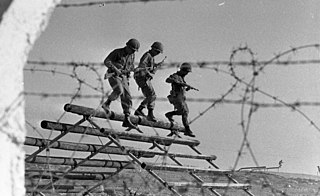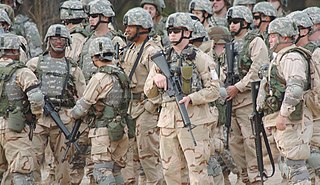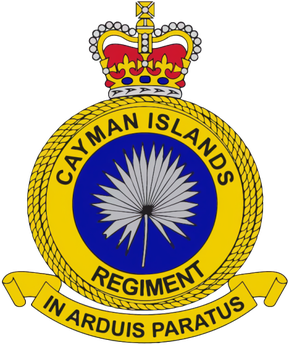External links
- Recruit Sustainment Program at the United States Army
Recruit Sustainment Program (RSP) is a program of the United States Army National Guard designed to introduce new recruits to the fundamentals of the U.S. Army before they leave to basic combat training (BCT) and advanced individual training (AIT). The motto is "Paratus Preliator" (prepared warrior).
The program is based on the three traits of combat which include being mentally prepared, administratively correct and physically fit, along with the seven Army Values signified by the acronym LDRSHIP (loyalty, duty, respect, selfless service, honor, integrity and personal courage).
RSP includes five phases. These include:
While at RSP, recruits do physical training to prepare for the rigors of BCT. Initially this includes the OPAT test, which consists of a standing long jump, seated power throw, deadlift, and shuttle run. After completion of BCT (green phase), recruits complete a standard Army Combat Fitness Test (ACFT). Generally, RSP recruits undergo an ACFT at every drill except for those in gold phase.
All new recruits receive the "Soldier's Blue Book". This book includes information required to be successful while attending RSP. This includes the Army Core Values, military time, rank structure, the history of the hand salute, General Orders for Sentries, and other relevant information.
Stripes for Skills often takes place during the second drill allows especially knowledgeable recruits to receive early promotions in rank (stripes) based on the demonstration of the skills that they already have. These classes are often more hands on, and typically include topics such as first aid, map reading, and drill and ceremony (D&C).
Following the second drill (the remainder of white phase) hands on training may occur. This involves more in-depth training in D&C, and weapon-handling. Recruits may learn drills like combat formations and operations using "rubber ducks" (fake rubber weapons meant to feel like their real counterpart).
Blue phase is the last drill before a recruit leaves for BCT, and typically includes inspirational Q&A with green and gold phase recruits about what to expect. Blue phase is the "crash course" of everything about basic training that might have been missed or neglected in earlier phases.

Military recruit training, commonly known as basic training or boot camp, refers to the initial instruction of new military personnel. It is a physically and psychologically intensive process, which resocializes its subjects for the unique demands of military employment.

A drill instructor is a non-commissioned officer in the armed forces, fire department, or police forces with specific duties that vary by country. Foot drill, military step, and marching are typically taught by drill instructors.

The U.S. military issues instructor badges to specially training military personnel who are charged with teaching military recruits the skills they need to perform as members of the U.S. Armed Forces or teach continuing education courses for non-commissioned officers and officers in the military. With the exception of the U.S. Army and U.S. Coast Guard, these badges are considered temporary military decorations and must be surrendered upon completion of one's duty as a military instructor. Because of this, the U.S. Air Force, U.S. Navy and U.S. Marine Corps award Drill Instructor Ribbons as a permanent decoration to recognize service members who have qualified and performed as military instructors.
The School of Infantry (SOI) is the second stage of initial military training for enlisted United States Marines after recruit training. The ITB now called IMC went from a 59 day course to 14 week course. Since the initial training pipeline is divided between coasts, Marines from areas east of the Mississippi River usually graduate from MCRD Parris Island and move on to SOI at SOI East, while those from the western half of the nation attend MCRD San Diego and move on to SOI West at the Camp San Onofre area of Camp Pendleton in California. Female Marines are trained at both SOI East and SOI West. The School of Infantry's training mission ensures "Every Marine is, first and foremost, a Rifleman". At SOI, Marines with the Military Occupational Specialty of infantry are trained at the Infantry Training Battalion (ITB), while all non-infantry Marines are trained in basic infantry and combat skills at the Marine Combat Training Battalion. SOI marks a transition in the professional training of entry-level students from basically trained Marines to combat-ready Marines.

The Marine Corps Martial Arts Program is a combat system developed by the United States Marine Corps to combine existing and new hand-to-hand and close quarters combat techniques with morale and team-building functions and instruction in the warrior ethos. The program, which began in 2001, trains Marines in unarmed combat, edged weapons, weapons of opportunity, and rifle and bayonet techniques.

Tironut is the Hebrew term for the recruit training of the Israel Defense Forces (IDF).

Cavalry Scout is the job title of someone who has achieved the military occupational specialty of 19D Armored Reconnaissance Specialist in the Combat Arms branch of the United States Army. As with all enlisted soldiers in the United States Cavalry, the person holding the Scout specialization will still be referred to as a "Trooper", the traditional colloquialism denoted in the cavalry's Order of the Spur.

The reorganization plan of the United States Army was implemented from 2006 to 2016 under the direction of the Brigade Modernization Command. This effort formally began in 2006 when General Peter Schoomaker was given the support to move the Army from its Cold War divisional orientation to a full-spectrum capability with fully manned, equipped and trained brigades; this effort was completed by the end of 2016. It has been the most comprehensive reorganization since World War II and included modular combat brigades, support brigades, and command headquarters, as well as rebalancing the active and reserve components.

The United States Marine Corps (USMC) prescribes several types of military uniform to distinguish its service members from other armed services, depending on the situation.
One Station Unit Training, sometimes referred to as One Site Unit Training, is a term used by the United States Army to refer to a training program in which recruits remain with the same unit for both Basic Combat Training (BCT) and Advanced Individual Training (AIT). Immediately following Basic Training, the unit seamlessly transforms from a BCT unit into an AIT unit. There is no relocation and the same Drill Sergeants who conducted the Basic Training will continue to instruct all of the participating recruits in their Advanced Individual Training. This streamlines the training schedule and helps to produce more camaraderie between trainees. There are a variety of Military Occupational Specialties (MOS) and training stations that have OSUT training, such as:

United States Army Basic Combat Training (BCT) is the recruit training program of the United States Army, for service in the U.S. Army, U.S. Army Reserve, or the Army National Guard.

An individual augmentee is a United States military member attached to a unit as a temporary duty assignment (TAD/TDY). Individual augmentees can be used to fill shortages or can be used when an individual with specialized knowledge or skill sets is required. As a result, individual augmentees can include members from an entirely different branch of service. The system was used extensively in the Iraq War, though with some criticism. By early 2007, there were an average of approximately 12,000 Navy personnel filling Army jobs in the United States, Iraq, Afghanistan, Cuba and the Horn of Africa at any one time.

Basic Training in the United States Army is the initial training for new military personnel typified by intense physical activity, psychological stress and the development of social cohesion. The United States Army Center for Initial Military Training (USACIMT) was created in 2009 under the U.S. Army Training and Doctrine Command to oversee training related issues.

The Infantryman Shoulder Cord is a United States military decoration worn over the right shoulder of all infantry-qualified U.S. Army soldiers. It is a fourragere in light blue, specifically PMS 5415, worn under the right shoulder and under the right epaulette of a U.S. Army infantry soldier's Class A dress blue uniform jacket or Class B shirt. The cord is composed of a series of alternating left and right half knots that are tied around a leader cord to form a "Solomon bar".

The Special Forces Qualification Course (SFQC) or, informally, the Q Course is the initial formal training program for entry into the United States Army Special Forces. Phase I of the Q Course is Special Forces Assessment and Selection (SFAS). A candidate who is selected at the conclusion of SFAS will enable a candidate to continue to the next of the four phases. If a candidate successfully completes all phases they will graduate as a Special Forces qualified soldier and then, generally, be assigned to a 12-men Operational Detachment "A" (ODA), commonly known as an "A team." The length of the Q Course changes depending on the applicant's primary job field within Special Forces and their assigned foreign language capability but will usually last between 56 and 95 weeks.
Royal Marines recruit training is the longest basic modern infantry training programme of any Commonwealth, or North Atlantic Treaty Organization (NATO) combat troops. The Royal Marines are the only part of the British Armed Forces where officers and other ranks are trained at the same location, the Commando Training Centre Royal Marines (CTCRM) at Lympstone, Devon. Much of the basic training is carried out on the rugged terrain of Dartmoor and Woodbury Common with a significant proportion taking place at night.

The Army Reserve Officer Training Corps (AROTC) is the United States Army component of the Reserve Officers' Training Corps. It is the largest Reserve Officer Training Corps (ROTC) program which is a group of college and university-based officer training programs for training commissioned officers for the United States Army and its reserves components: the Army Reserves and the Army National Guard. There are over 30,000 Army ROTC cadets enrolled in 274 ROTC programs at major universities throughout the United States. These schools are categorized as Military Colleges (MC), Military Junior Colleges (MJC) and Civilian Colleges (CC).

The South African Army Training Formation is the controlling entity of all South African Army training units. The Formation was established in April 1999 and mandated to provide, maintain and sustain landward common training to the SA Army.

The United States Army Combat Fitness Test (ACFT) is the fitness test for the United States Army. It was designed to better reflect the stresses of a combat environment, to address the poor physical fitness of recruits, and to reduce the risk of musculoskeletal injuries for service members. It consists of six events. Each event is graded on a scale from 0 to 100 points. A minimum of 60 points is required to pass each event. The maximum score is a 600. The test is the US Army's fitness test of record since October 2022.

The Cayman Islands Regiment is the home defence unit of the British Overseas Territory of the Cayman Islands. It is a single territorial infantry and engineer reserve unit of the British Armed Forces that was formed in 2020. The regiment has an authorized strength level objective of 175 personnel, akin to that of a company-sized unit.